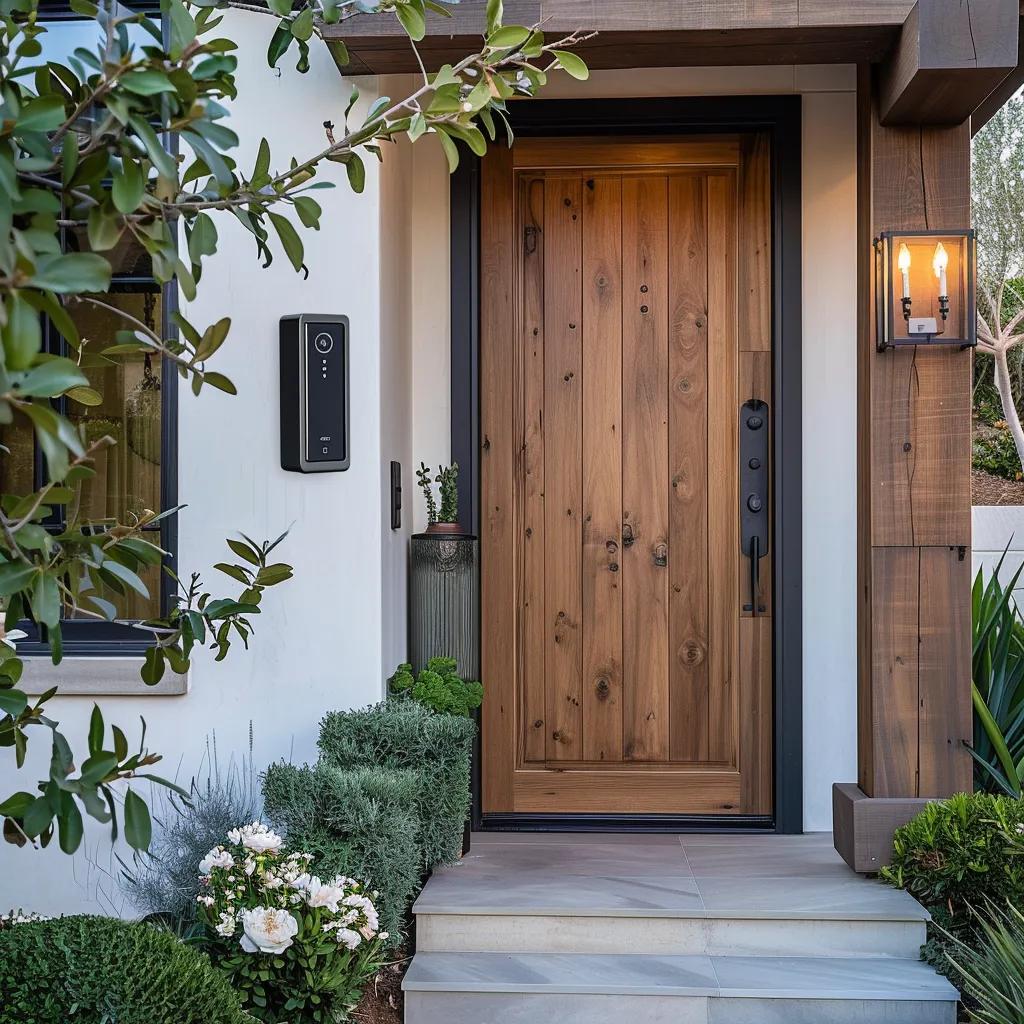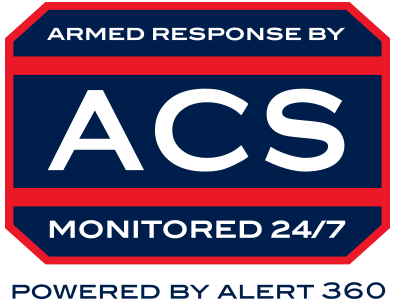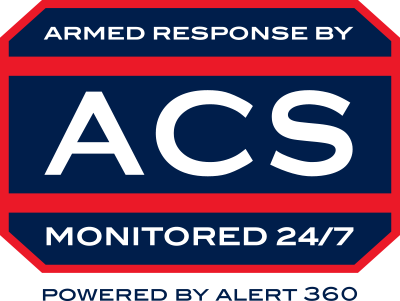Enhance Your Safety: Layers of Security for LA Homes

Los Angeles Layered Home Security: Multi‑Layer Protection Built for Your Home
Layered home security combines overlapping technology and human response to deter intruders, detect threats early, and enable fast intervention before loss occurs. In Los Angeles — where package theft, vehicle break‑ins, and opportunistic property crime are on the rise — a multi‑layered defense works especially well because it creates multiple obstacles for an attacker and raises the odds of early detection. This guide breaks down the Deter → Detect → Respond model in practical terms, maps devices to common LA scenarios, and explains how perimeter protection, entry hardening, interior detection, patrols, and smart‑home integration fit together. You’ll find actionable device recommendations, placement tips, maintenance priorities, and how coordinated monitoring and patrols shorten response times. Read on for step‑by‑step advice and comparison tables that help homeowners design a tailored, multi‑layer security plan for Los Angeles properties.
What Is Layered Home Security and Why Is It Essential for Los Angeles Homes?
Layered home security places complementary defenses at the perimeter, entry points, inside the house, and in the response chain so each layer can detect or block threats earlier in the attack sequence. An outer detection — like a property‑line sensor — starts a verification process (cameras, alerts, monitoring) that allows a targeted response instead of a single isolated alarm. For Los Angeles homeowners, layered defenses directly address local risks — porch package thefts, driveway break‑ins, and opportunistic vandalism — by forcing intruders to overcome several barriers before reaching valuables. Below are three primary benefits you can expect from a layered design.
- Stronger deterrence: Visible measures such as lighting and patrols discourage opportunistic crime before it starts.
- Faster detection: Perimeter sensors and HD cameras spot threats earlier so verification and intervention can follow.
- Improved response: Professional monitoring and patrols shorten time‑to‑intervention, increasing the chance of prevention.
These advantages illustrate how perimeter technologies and coordinated patrols work together to stop incidents before they escalate — a topic we cover next.
How Does Multi-Layered Security Protect Los Angeles Residences?
Multi‑layered security sequences sensors and responses so each alert supports verification and a targeted action rather than triggering a single, stand‑alone alarm. An outer sensor sees motion, cameras capture footage, and monitoring teams verify activity — enabling a patrol or dispatcher to respond quickly; this flow reduces false alarms and strengthens deterrence. For example, a package theft might be detected by a property‑line sensor, recorded by a porch camera, and interrupted by a visible patrol or audible alarm before the thief leaves. Integration across perimeter sensors, cameras, locks, and monitoring also preserves HD video and timestamps that help police. In short, placement and system integration matter as much as device choice.
What Are the Key Benefits of Layered Security Systems in Los Angeles?
Layered systems give homeowners measurable advantages by aligning prevention, detection, and response to local threats. First, visible deterrents reduce attempt rates. Second, earlier detection through perimeter and entry sensors shortens the window for loss and produces verifiable evidence for law enforcement. Third, professional monitoring plus patrol coordination reduces homeowner burden and improves outcomes through verified escalation. Together these benefits often mean less stress, fewer losses, potential insurance savings, and a reliable escalation process communities can depend on.
How Does ACS Security Implement Perimeter Protection for Los Angeles Homes?

Perimeter protection uses early‑warning devices and environmental design to detect intrusions before they reach the house. Effective perimeter strategies balance sensitivity with false‑alarm reduction by layering verification steps. Typical measures include infrared beams, property‑line vibration sensors, perimeter cameras, motion‑activated lighting, and defensible landscaping that removes concealment. Beams and line sensors detect crossings at a distance, HD cameras verify events, and lighting and landscape adjustments reduce hiding spots — together producing earlier, usable alerts that lead to faster verification and response. We use ACS Security as a local example to show how patrols and monitoring combine; the following subsections compare perimeter technologies and offer practical placement guidance.
Combining detection and verification devices at the perimeter creates earlier, actionable alerts that feed monitoring and patrol response.
What Role Do Infrared Beams and Property Line Sensors Play in Perimeter Defense?
Infrared beams and property‑line sensors are the earliest detection layer: they signal when someone crosses a defined boundary and trigger verification sequences that help prevent escalation. Infrared beams work well for driveways and open approaches; vibration or pressure sensors suit fence lines and concealed perimeters. Both must be calibrated for local conditions to limit false positives from wildlife or wind. Place devices so fields overlap — beams near cameras and lighting — to ensure alarms produce usable video for quick assessment. Properly tuned perimeter devices extend your detection window and improve monitoring outcomes before threats reach entry points.
How Can Strategic Outdoor Lighting and Landscaping Enhance Perimeter Security?
Smart lighting and intentional landscaping reduce hiding places and improve visual verification, turning passive exposures into active deterrents. Motion‑activated fixtures should light likely approaches; low, well‑trimmed hedges remove concealment near fences and improve camera sightlines. Use layered lighting — soft walkway lighting, focused motion fixtures at entryways, and accent illumination at corners — to create graduated visibility without hurting curb appeal.
These environmental measures work with sensors and cameras to create a perimeter that both detects and discourages intrusion, setting the stage for secure entry‑point controls discussed next.
How Can You Secure Exterior Entry Points with Smart Home Security in Los Angeles?

Securing exterior entry points pairs hardened hardware with access control and monitored verification so doors and windows become active elements of your layered defense. Smart locks, reinforced doors and frames, video doorbells, and entry sensors reduce unauthorized access while creating audit trails and remote control for homeowners. When integrated, a smart‑lock event or door sensor activation can trigger nearby cameras and notifications so monitoring teams or residents can verify activity and act immediately. Below are the device categories we recommend and why they matter for Los Angeles homes.
- Smart locks: Remote access control, temporary codes, and event logs that limit unauthorized entry.
- Video doorbells: HD identification, two‑way audio, and timestamped footage to verify deliveries and suspicious visitors.
- Reinforcement hardware: Strengthened strike plates and solid‑core doors that resist kick‑in attacks and delay entry.
These devices work with interior sensors and monitoring to create a resilient entry‑point layer that buys time for verification and response.
What Are the Advantages of Smart Locks and Keyless Entry Systems in LA Homes?
Smart locks replace vulnerable physical keys with auditable, revocable digital credentials, reducing the risk of unauthorized copies and enabling temporary access for service providers. They integrate with alarm systems to auto‑lock at set times, and many use strong encryption with local backup options for outages. Smart‑lock logs create an audit trail useful after an incident, and remote control speeds coordination with monitoring or patrols. When combined with verification cameras and professional monitoring, smart locks add convenience and a security layer that improves overall system resilience.
Smart Locks: Advancing Home Security and Convenience
Smart locks have changed how homeowners manage access and security. By replacing physical keys with encrypted digital credentials and offering features like temporary codes and remote management, smart locks improve convenience while strengthening control over who can enter your home. When part of a monitored smart‑home system, they also provide audit trails and remote verification that support faster, safer responses.
The usage of smart locks in smart home, R. Wolniak, 2024
How Do High-Definition Video Doorbells and Surveillance Cameras Improve Home Security?
HD video doorbells and cameras improve identification and evidence collection with clear images, wide fields of view, and reliable night vision so monitoring teams or homeowners can verify incidents from a distance. Cameras pointed at approaches, porches, and driveways capture facial and vehicle details that matter for police reports and insurance claims; two‑way audio lets you or a monitor deter suspicious behavior immediately. Consider storage options (local vs. cloud) and retention periods — pick devices with secure, tamper‑resistant storage and privacy controls. Cameras integrated with monitoring and patrol alerts produce usable visual proof that speeds verification and reduces false dispatches.
This comparison shows how each exterior component serves a specific verification or deterrence role and together secures entry points effectively.
What Interior Intrusion Detection Systems Are Most Effective for Los Angeles Homes?
Interior intrusion detection pairs motion sensors, glass‑break detectors, door and window contacts, and panic devices with 24/7 monitoring to detect threats inside the structure and trigger verified responses. Interior sensors spot movement or forced entry, cameras corroborate events, and monitoring centers follow verification protocols to escalate as needed. For LA homeowners, interior layers are critical when perimeter detection fails or for overnight protection — they act as the final automated line before occupants or patrols intervene. Effective layouts prioritize sensor placement in high‑risk zones and use multiple sensor types to reduce false alarms and improve detection confidence.
How Do Advanced Motion Sensors and Glass Break Detectors Work?
Advanced motion sensors pair passive infrared (PIR) with microwave or dual‑tech sensing to detect heat and movement, lowering false alarms from pets or HVAC. Glass‑break detectors use acoustic or shock sensing to identify window or door breaks. Place PIR sensors along travel paths and glass‑break detectors within acoustic range of vulnerable windows so multiple sensors can corroborate events. Proper calibration — accounting for typical household activity and pet size — is essential to avoid nuisance alerts. Combining sensor types provides complementary detection that improves verification and response quality.
Why Is 24/7 Professional Alarm Monitoring Critical for LA Homeowners?
24/7 professional monitoring links detection to verification and escalation protocols that run around the clock, turning sensor triggers into meaningful actions like patrol dispatch or emergency services notification. Monitoring centers verify events — reviewing video, listening to audio, or calling residents — before escalating, which reduces false police dispatches and ensures verified threats get priority. Local monitoring that coordinates with neighborhood patrols shortens the gap between detection and physical intervention and keeps protection consistent when homeowners are away. Reliable monitoring turns layered detection into actionable security outcomes by providing timely human review and escalation.
This comparison shows how professional monitoring and patrol coordination create predictable, escalating responses that protect residents and property.
How Does Proactive Deterrence and Rapid Response Strengthen Layered Security in Los Angeles?
Proactive deterrence and rapid response turn detection into immediate action by combining visible human presence with verified escalation to interrupt crimes in progress. Regular neighborhood patrols, live monitoring with real‑time intervention, and clear escalation protocols ensure that when sensors or cameras flag suspicious activity, a human decision leads to the fastest safe outcome. In dense Los Angeles neighborhoods where opportunistic crimes can unfold quickly, a proactive model prevents incidents far more reliably than reactive alarms alone. The next sections explain how patrol integration and escalation typically work so homeowners know what to expect when human and electronic measures operate together.
What Makes ACS Security’s Neighborhood Patrols a Visible Deterrent?
Neighborhood patrols provide recurring, visible security presence that makes opportunistic crime less attractive and increases the chance that suspicious behavior is interrupted before property is contacted. When monitoring verification indicates a possible intrusion, patrols can be dispatched to specific addresses — creating a layered chain where electronic detection triggers human presence. ACS Security includes neighborhood patrols within its multi‑layer solutions, combining visible patrols with monitoring‑driven dispatch to break the attack sequence early. Regular patrols also boost homeowner confidence and overall community safety through frequent, targeted presence.
How Do Armed Response and Emergency Dispatch Protect Your Home?
Armed response and emergency dispatch are escalation steps activated after monitoring verification and patrol assessment to provide definitive intervention when a confirmed criminal threat exists. They operate under legal and safety protocols designed to minimize risk to residents. The escalation ladder normally begins with monitoring verification, moves to patrol dispatch for deterrence or containment, and — if warranted — advances to armed response or police notification per local rules of engagement. Homeowners should know these measures are reserved for confirmed threats and that coordination among monitoring, patrols, and law enforcement is essential for safe, lawful outcomes. Clear verification steps and escalation criteria help everyone act decisively and responsibly.
The table clarifies how response methods are used progressively to protect homes while balancing safety and legal considerations.
How Does Smart Home Integration Enhance Layered Security for Los Angeles Residences?
Smart home integration turns separate devices into a coordinated system where events trigger automated actions and centralized visibility, making the Deter → Detect → Respond flow faster and more reliable. Automation scenes can lock doors, flash lights, start cameras, and notify monitoring centers simultaneously when an event occurs — narrowing the human response gap. Unified dashboards and mobile alerts let homeowners verify and manage incidents remotely while preserving an audit trail. Integration amplifies the effectiveness of sensors, cameras, and patrol coordination by ensuring each layer communicates and acts predictably.
What Smart Home Devices Are Compatible with ACS Security Systems?
Professionally monitored systems commonly integrate smart locks, cameras, door/window sensors, thermostats, and lighting controllers that support standard connectivity and monitored automation. Native integrations provide immediate status updates and let devices participate in automated scenes; some third‑party gadgets may need bridging to maintain reliability. ACS Security supports smart integrations as part of multi‑layer solutions so homeowners can combine convenience and safety through unified management. Choosing compatible devices and keeping firmware current are essential to maintain secure, dependable integrations.
How Can Remote Security Management via Mobile Apps Improve Home Safety?
Mobile apps provide instant awareness and remote control — real‑time alerts, live video, remote arming/disarming, and event history — shortening response times and enabling decisive action from anywhere. A typical workflow: you get an alert, open live video, confirm a package theft or false alarm, then play a recorded message or request patrol dispatch. Apps also timestamp homeowner reactions and let you contact monitoring centers directly. By speeding verification and decision‑making, mobile management strengthens the link between automated detection and effective response.
Why Choose ACS Security as Your Premier Layered Home Security Provider in Los Angeles?
ACS Security delivers comprehensive, multi‑layer security tailored to Los Angeles communities — combining neighborhood patrols, HD video surveillance, infrared perimeter protection, and smart intrusion detection to create integrated protection plans. Founded and operating locally since 1984, ACS emphasizes concierge‑level service with reliable local alarm monitoring and fast patrol response, aligning its approach to neighborhood dynamics and local threats. Homeowners seeking a local partner will find ACS’s mix of human patrols and modern detection technologies fits a verification‑first, proactive deterrence strategy. Key service highlights include:
- Neighborhood patrols: Regular, visible patrols that deter opportunistic crime.
- HD video surveillance: High‑definition cameras for clear identification and evidence.
- Infrared perimeter protection: Early detection along property lines to extend the defensive window.
- Smart intrusion detection: Integrated sensors and automation for rapid verification and response.
These capabilities combine local knowledge and human resources with advanced technology to prevent incidents rather than merely respond after loss.
How Does ACS Security’s Local Experience Since 1984 Benefit LA Homeowners?
Decades of local service translate into deep knowledge of Los Angeles neighborhoods and practical experience coordinating monitoring and patrols under local conditions. ACS’s tenure means familiarity with common crime patterns, traffic and routing considerations for patrols, and local relationships that support faster, localized response. That context improves threat assessments, sensor placement, patrol frequency, and escalation choices for LA properties. Homeowners gain a partner that understands neighborhood nuances and adapts layered solutions to real‑world urban and suburban layouts.
What Do Los Angeles Residents Say About ACS Security’s Layered Protection?
Verified testimonials and anonymized case studies are the best way to judge real‑world effectiveness. Ask providers for examples that describe detection, verification, and patrol outcomes so you can see how layered defenses work in practice and what typical response timelines look like. Community feedback often highlights measurable results — fewer incidents, faster intervention, and improved neighborhood safety — that demonstrate the value of combining monitoring with patrols. Request documented examples during assessments to validate a provider’s claims.
How Can You Get a Custom Layered Security Plan for Your Los Angeles Home Today?
Designing a custom layered plan starts with a site assessment to identify perimeter weaknesses, entry points, interior risk zones, and existing home automation so recommendations match your home and lifestyle. A thorough assessment reviews sightlines, lighting, landscaping, camera gaps, and daily routines to propose layered measures that balance deterrence, detection, and discreet design. After the assessment you’ll receive a tailored proposal outlining recommended devices, placement, monitoring protocols, and expected response workflows so you understand cost and operations before installation. The final phase includes professional installation, testing, and a verification period to fine‑tune sensor sensitivity and automation scenes to reduce false alarms.
- Site assessment: A technician surveys the property to find vulnerabilities and integration points.
- Customized proposal: A layered plan recommending perimeter, entry, interior, and response measures tailored to the home.
- Installation & testing: Professional installation followed by calibration and verification of monitoring and patrol workflows.
These steps ensure layered defenses are practical, effective, and tailored to Los Angeles‑specific risks while preparing homeowners for ongoing maintenance and updates.
What Is the Process for Designing a Tailored Security Solution with ACS Security?
The design process follows clear phases — assessment, risk analysis, proposal, installation, and testing — focused on matching layered technologies and patrol coverage to your property’s profile. During assessment ACS evaluates perimeter lines, camera sightlines, likely entry paths, and smart‑home compatibility to recommend a balanced mix of infrared perimeter devices, entry hardening, interior sensors, and monitoring protocols. The proposal includes options for verification, patrol integration, and automation scenes that prioritize early detection and safe escalation. After installation and testing, a verification period lets technicians adjust sensitivity and patrol routines to optimize real‑world performance and minimize nuisance alarms.
How Do You Schedule a Consultation or Security Assessment in Los Angeles?
To schedule a consultation, request an assessment and provide a basic property overview (photos, known vulnerabilities, existing devices) and preferred visit times. Share typical occupancy patterns, recent incidents, and any smart‑home systems to help the assessor tailor recommendations. Expect a timeline where assessment leads to a written proposal and installation scheduling based on your decisions and equipment lead times. When comparing providers, ask about monitoring protocols, patrol frequency, and verification procedures so you can evaluate how each company executes layered protection. Preparing this information streamlines the process and produces a more accurate plan.
- Prepare photos and note vulnerable areas: Helps the assessor plan sensor and camera placement.
- Document existing smart devices: Ensures compatibility and smoother integration.
- Ask about verification and patrol coordination: Confirms how detection becomes response in your neighborhood.
Following these steps shortens assessment time and yields more accurate, cost‑effective layered security recommendations.
Frequently Asked Questions
What are the most common types of home security systems available in Los Angeles?
In Los Angeles, homeowners typically choose between traditional alarm systems, smart‑home security platforms, and professionally monitored services. Traditional systems rely on sensors and alarms to signal intrusions. Smart systems integrate cameras, smart locks, and motion sensors for remote control and automation. Monitored services add 24/7 human oversight to verify events and dispatch responses. Each option serves different needs — from basic alerts to fully managed protection with patrol support.
How can I improve my home’s security without a complete system overhaul?
You don’t need a full replacement to boost security. Start with reinforced deadbolts and security film on vulnerable windows. Add motion‑activated lights near entry points and a video doorbell or a few cameras to monitor activity. Trim landscaping to eliminate hiding spots and consider joining or forming a neighborhood watch. These practical steps significantly raise the barrier to opportunistic crime without major renovation.
What should I consider when choosing a home security provider in Los Angeles?
When evaluating providers, look for local experience and a clear explanation of monitoring, patrol, and escalation procedures. Check customer reviews and ask for anonymized case studies showing response timelines. Confirm technology compatibility with your smart devices, installation quality, and ongoing support. Price is important, but prioritize verified performance and transparent monitoring practices.
How often should I test my home security system?
Test your system at least once a month. Verify sensors, alarms, cameras, and that monitoring contacts are current. After any system changes or renovations, retest to confirm coverage and settings. Regular tests help catch faults early and keep response procedures reliable.
What are the benefits of integrating smart home technology with security systems?
Smart home integration improves convenience and safety: remote monitoring, automated responses (lock doors, turn on lights), and real‑time alerts help you verify incidents quickly. Integration centralizes control and creates an audit trail of events, which speeds response and improves evidence collection when needed.
How can neighborhood watch programs enhance home security?
Neighborhood watch programs build community vigilance and communication. Neighbors who report suspicious activity and share local trends increase visibility and deter criminals. These programs often work with local law enforcement to speed response and improve overall neighborhood safety. Active community participation can noticeably reduce crime in an area.
Conclusion
Implementing a multi‑layered home security plan in Los Angeles strengthens protection against common property crimes by combining technology, monitoring, and human patrols. When perimeter detection, entry hardening, interior sensors, and verified monitoring work together, homeowners gain a predictable, proactive defense that prevents incidents more often than it merely responds to them. Take the first step: request a tailored security assessment to see how a layered plan fits your property and needs. Contact us to schedule your personalized consultation and start building a comprehensive protection strategy.



